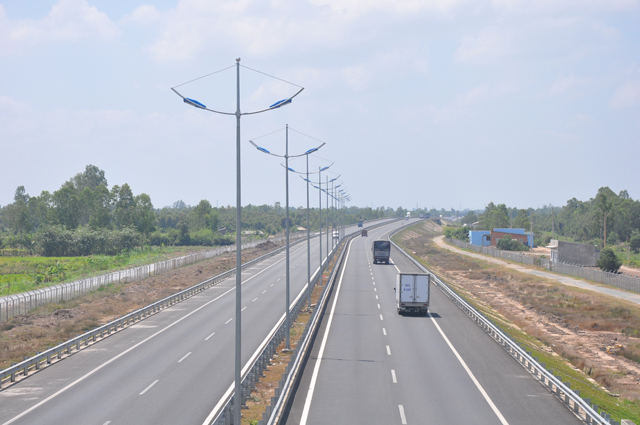Government approves investment plan on construction of North-South highway
The Government has adopted an investment plan on building the North-South highway proposed by the Ministry of Transport, under which the Government will provide VND41,414 billion (US$1.82 billion) for the construction of 467km of the highway.
 |
| The Ho Chi Minh City – Trung Luong Expressway. Photo: Huu Chi |
Earlier, the Ministry of Transport submitted to the Government three investment plans to contruct 1,372km of the North-South highway, which was estimated to cost VND314,100 billion (US$13.82 billion).
The Government decideded on the investment plan that will see the Government provide a fund of VND41,414 billion to construct 467km of three sections of the highway including the Cao Bo (Nam Dinh) - Vinh (Nghe An) section; the Cam Lo (Quang Tri) - Tuy Loan (Da Nang) section; and the Phan Thiet (Binh Thuan) - Dau Giay (Dong Nai) section.
The selected plan is considered the most cost effective plan amid many difficulties in public investment.
In the short term between 2017-2020, priorities will be given to the construction of 632km of the sections including Mai Son (Ninh Binh) - Bai Vot (Ha Tinh), Cam Lo (Quang Tri) - La Son (Thua Thien Hue), and Nha Trang (Khanh Hoa) - Dau Giay (Dong Nai).
Prime Minister Nguyen Xuan Phuc requested that special attention be given to land clearance for the highway project, which needs the active participation of local authorities to ensure the efficiency of the project.
He also asked that the Transport Minister bears responsibility for the investment plan on the highway project.
The Transport Ministry affirmed that the North-South economic corridor plays an important role in connecting the two national hubs of Hanoi and Ho Chi Minh City as well as an additional 18 provinces and cities.
The highway project is estimated to contribute 52% to the GDP whilst creating an influence on 45% of the population, 75% of sea ports and 67% of economic zones across the country.
(Source: NDO)
 về đầu trang
về đầu trang






